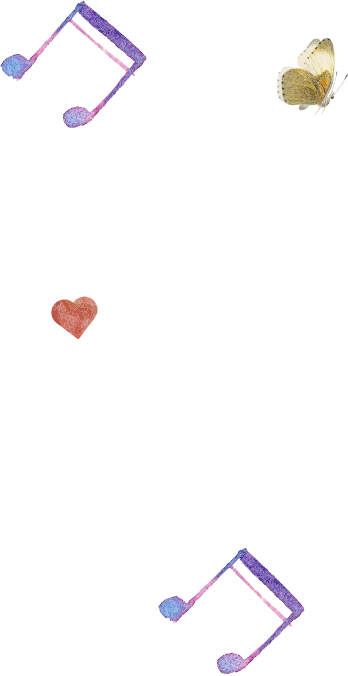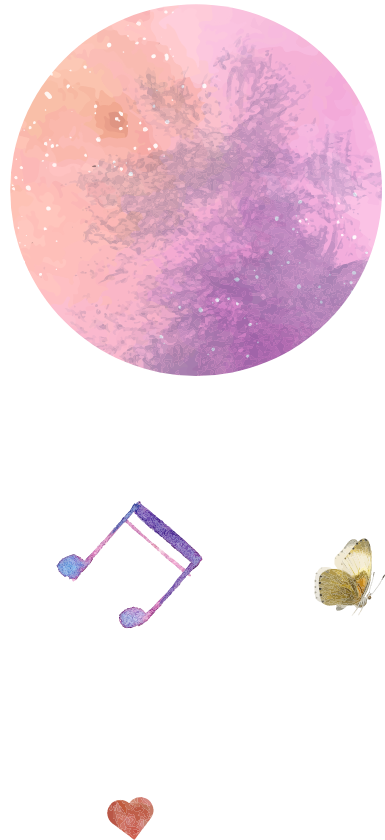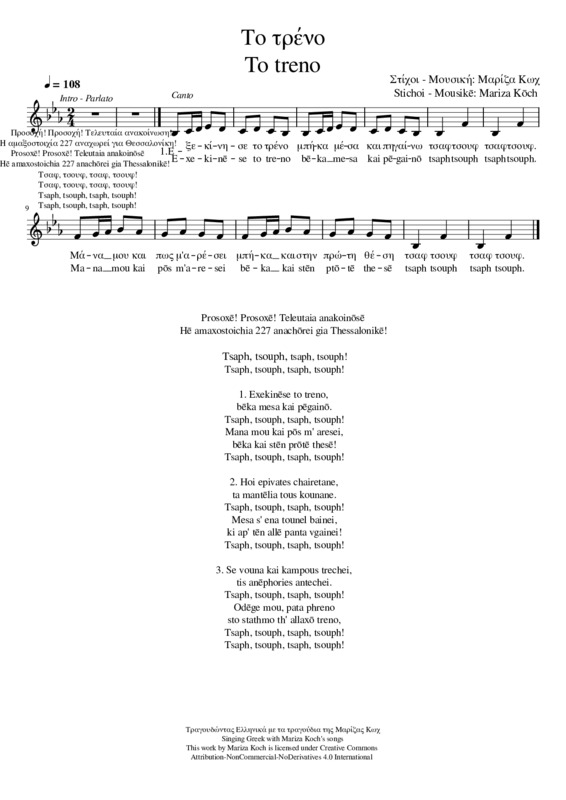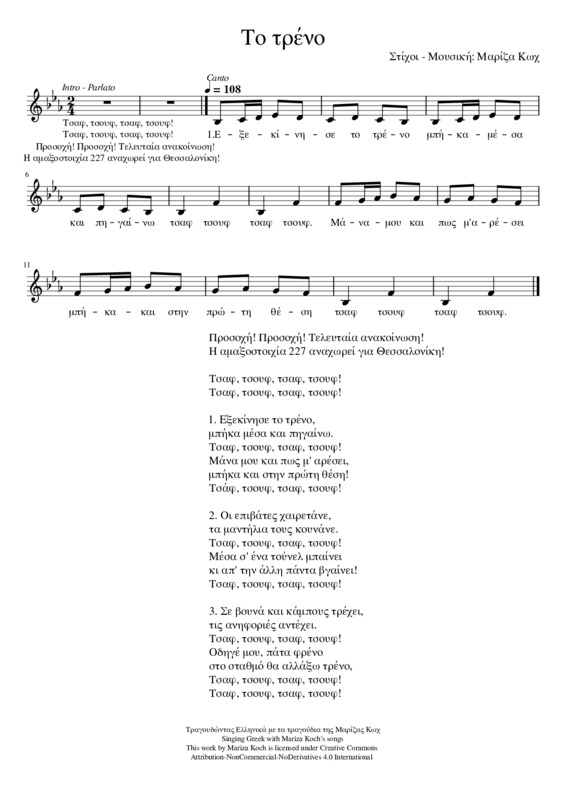
To treno

To treno
Pronunciation
Articulation of the double consonants /τσ/ (/ts/) and practice with words of the song and others [τσαφ (tsaph), τσουφ (tsouph), τσιγαρίζω (tsigarizō, to brown), τσιπούρα (tsipoura, bream), etc.].
Speech Comprehension and Production
The structure of speech in announcements and advertisements (concise and compact speech, use of punctuation marks, sense of urgency): give examples from announcements in public transport, media etc. Create advertisements with different topics and read them aloud as announcements.
Narrative song (using present and past tenses): find the verbs and use them so as to transform the poem into a narrative in a past tense.
Narrative song (using present and past tenses): find the verbs and use them so as to transform the poem into a narrative in a past tense.
Music Activities
Sing while emphasizing on the rhythm of the meter: the pupils sing the pattern "τσαφ-τσουφ" (tsaph-tsouph) (in quarters) and walk rhythmically while mimicking the wheels of old motor trains with their hands. Comprehend the concepts of acceleration (accelerando) and deceleration (ralentando/ritardando) throughout the movement and the rhythm of the song.
Reciting of the announcement in different funny and distinct ways by each child.
Arrangement in a circle: rendering of the “tsaph-tsouph” pattern in different ways (rhythmically or melodically) so that a new pattern is repeated by the whole class as a group (question-answer) or by the next pupil in turn until the circle closes (pyramid) or until the change of the pattern by another pupil.
Practice the interval of perfect 5th using the voice or melodic instruments. The pupils are invited to find songs or to create melodic phrases that contain the perfect 5th interval.
Instrumentation of the song using Orff techniques (ostinato, bordun). Use the “tsaph-tsouph” pattern as bordun.
Songs related to the train: "τσαφ τσου τσαφ τσουφ το τρένο περνά, τσαφ τσου τσαφ τσουφ περνά και σφυρά" (tsaph tsou tsaph tsouph to treno perna, tsaph tsou tsaph tsouph perna kai sphyra), the Spanish song Corre el trencito, etc.
Reciting of the announcement in different funny and distinct ways by each child.
Arrangement in a circle: rendering of the “tsaph-tsouph” pattern in different ways (rhythmically or melodically) so that a new pattern is repeated by the whole class as a group (question-answer) or by the next pupil in turn until the circle closes (pyramid) or until the change of the pattern by another pupil.
Practice the interval of perfect 5th using the voice or melodic instruments. The pupils are invited to find songs or to create melodic phrases that contain the perfect 5th interval.
Instrumentation of the song using Orff techniques (ostinato, bordun). Use the “tsaph-tsouph” pattern as bordun.
Songs related to the train: "τσαφ τσου τσαφ τσουφ το τρένο περνά, τσαφ τσου τσαφ τσουφ περνά και σφυρά" (tsaph tsou tsaph tsouph to treno perna, tsaph tsou tsaph tsouph perna kai sphyra), the Spanish song Corre el trencito, etc.
Cross-thematic Connections - Greek Culture
Interdisciplinary concept: communication.
Scenes with greetings in the past and present (waving with hats, hankies, etc.).
Typical expressions and sounds that mark events in people's social life (the school bell, the church bell, the theater bell, announcements at stations of public transport, addressing the audience, etc.).
Means of transport that people used to facilitate communication (horse, pirogue, cart, ship, train, car, hot-air balloon, etc.). Make special reference to the train and its historical evolution (motor train using coal, fuel, electric train, tram, etc.).
Connection of the Athens-Thessaloniki train route with the prefectures and cities that it passes through. The pupils play the game in which they mark the train stations on the map of Greece.
Scenes with greetings in the past and present (waving with hats, hankies, etc.).
Typical expressions and sounds that mark events in people's social life (the school bell, the church bell, the theater bell, announcements at stations of public transport, addressing the audience, etc.).
Means of transport that people used to facilitate communication (horse, pirogue, cart, ship, train, car, hot-air balloon, etc.). Make special reference to the train and its historical evolution (motor train using coal, fuel, electric train, tram, etc.).
Connection of the Athens-Thessaloniki train route with the prefectures and cities that it passes through. The pupils play the game in which they mark the train stations on the map of Greece.
Age level
3-7 years old
7-11 years old
Language level
Beginner






